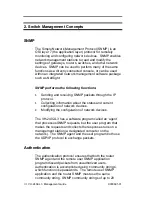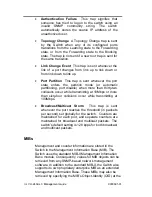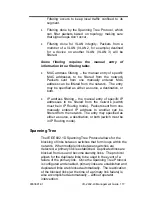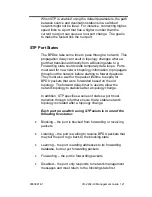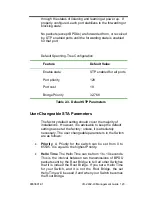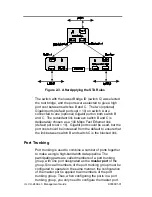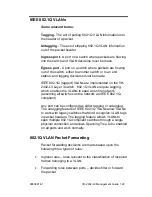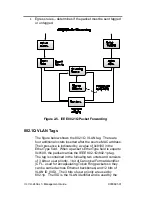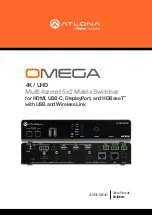
126
VH-2402-L3 Management Guide
9033691-01
Figure 2-3. After Applying the STA Rules
The switch with the lowest Bridge ID (switch C) was elected
the root bridge, and the ports were selected to give a high
port cost between switches B and C. The two (optional)
Gigabit ports (default port cost = 10) on switch A are
connected to one (optional) Gigabit port on both switch B
and C. The redundant link between switch B and C is
deliberately chosen as a 100 Mbps Fast Ethernet link
(default port cost = 19). Gigabit ports could be used, but the
port cost should be increased from the default to ensure that
the link between switch B and switch C is the blocked link.
Port Trunking
Port trunking is used to combine a number of ports together
to make a single high-bandwidth data pipeline. The
participating parts are called members of a port trunking
group, with one port designated as the
master port
of the
group. Since all members of the port trunking group must be
configured to operate in the same manner, the configuration
of the master port is applied to all members of the port
trunking group. Thus, when configuring the ports in a port
trunking group, you only need to configure the master port.

